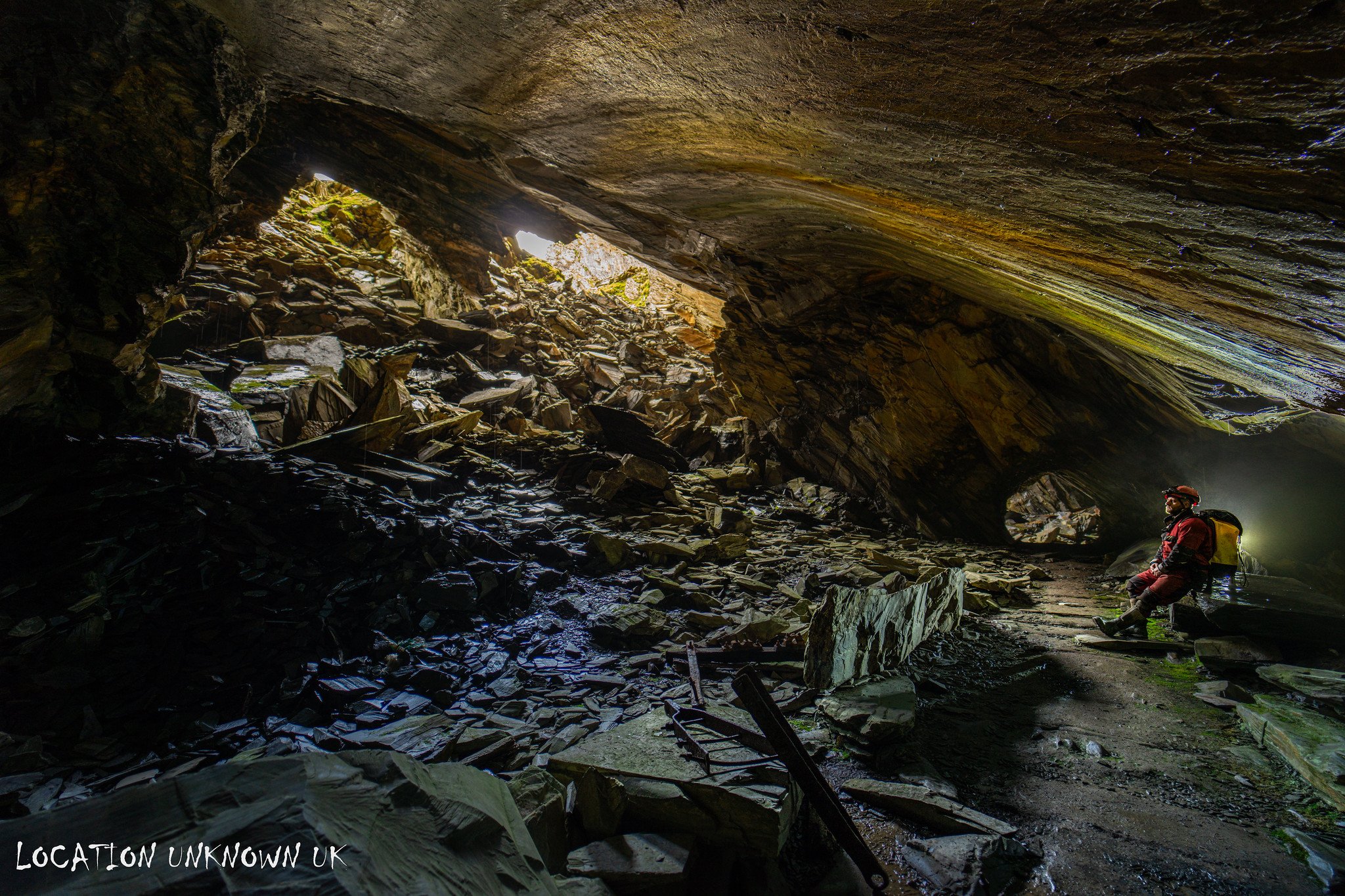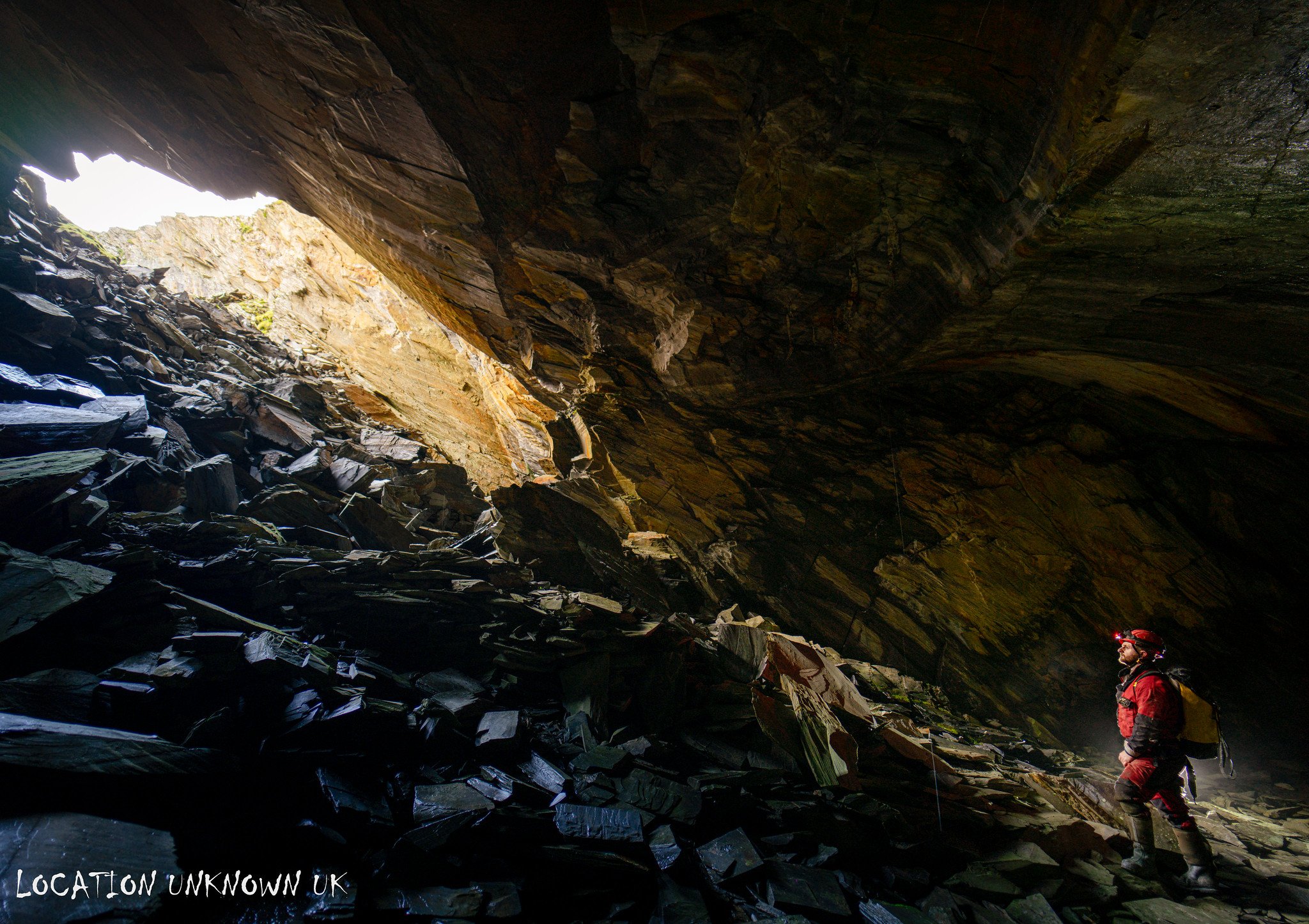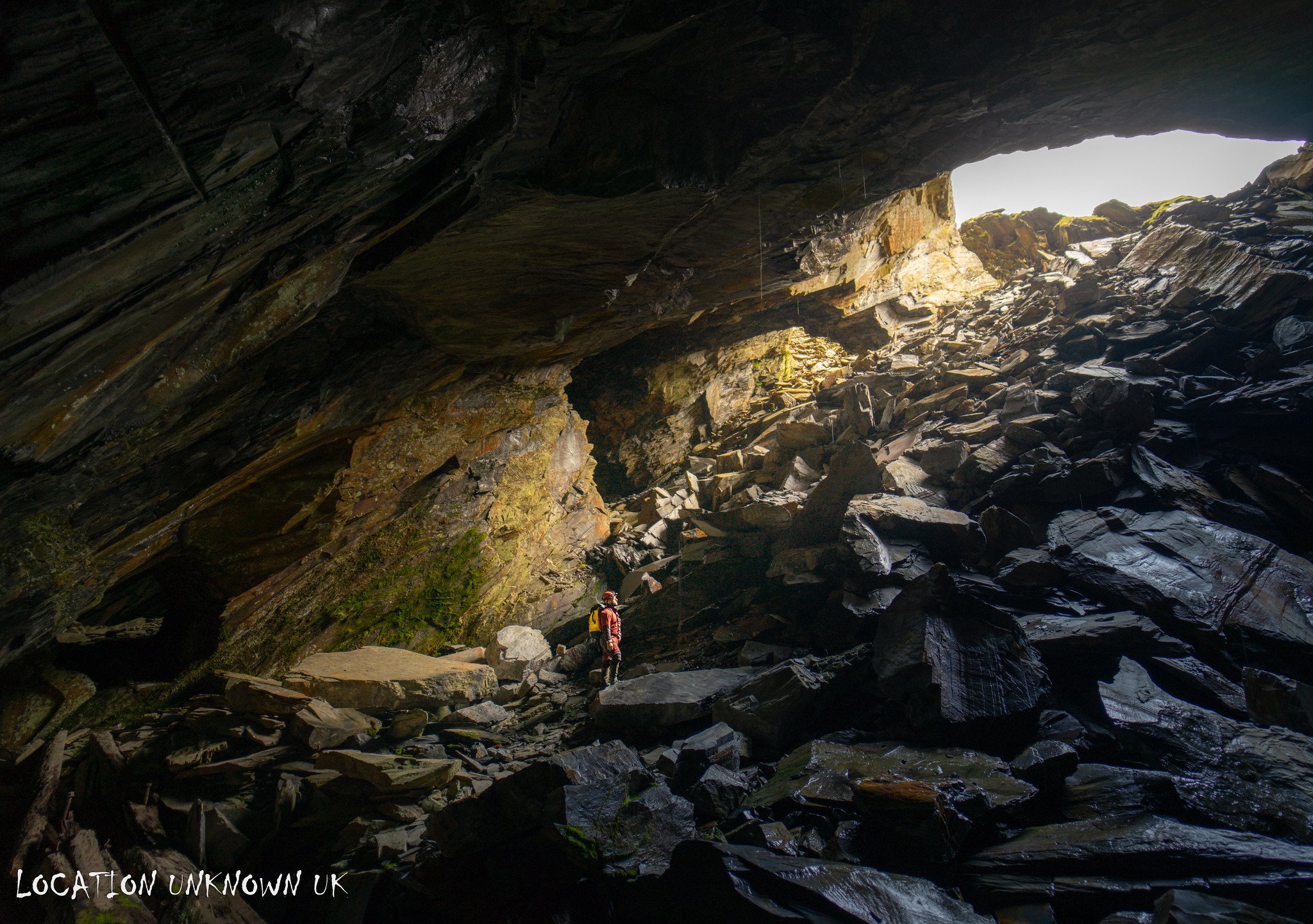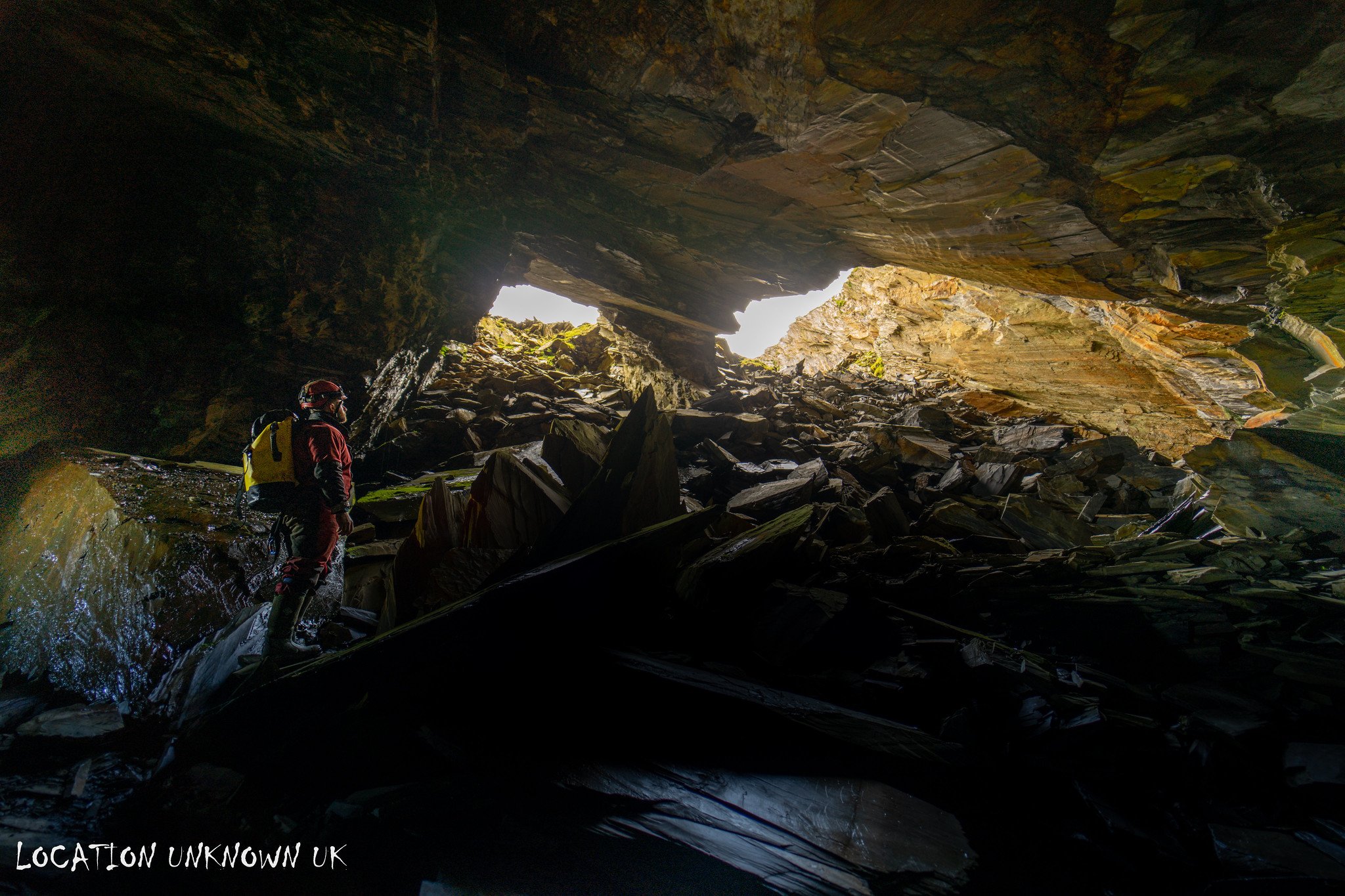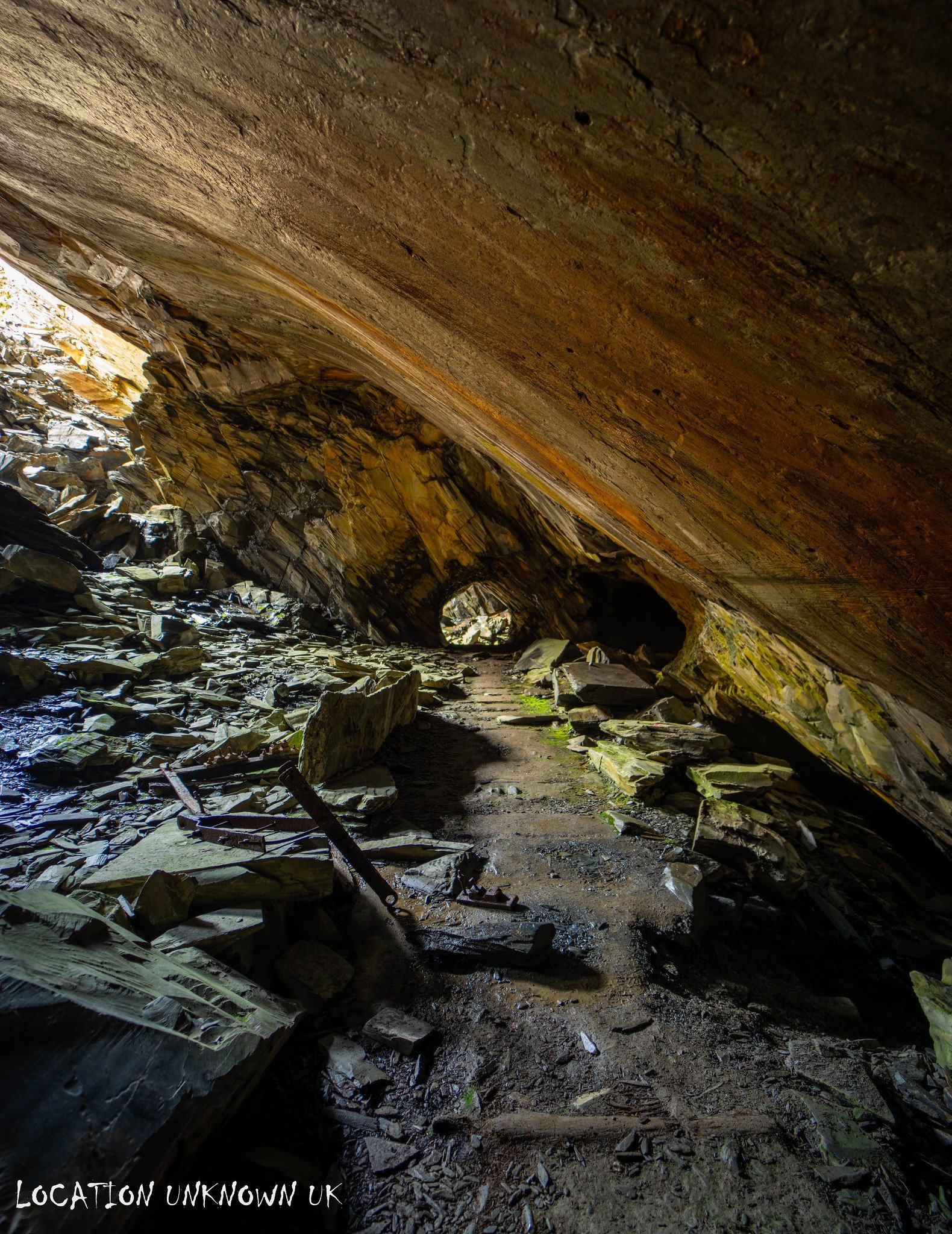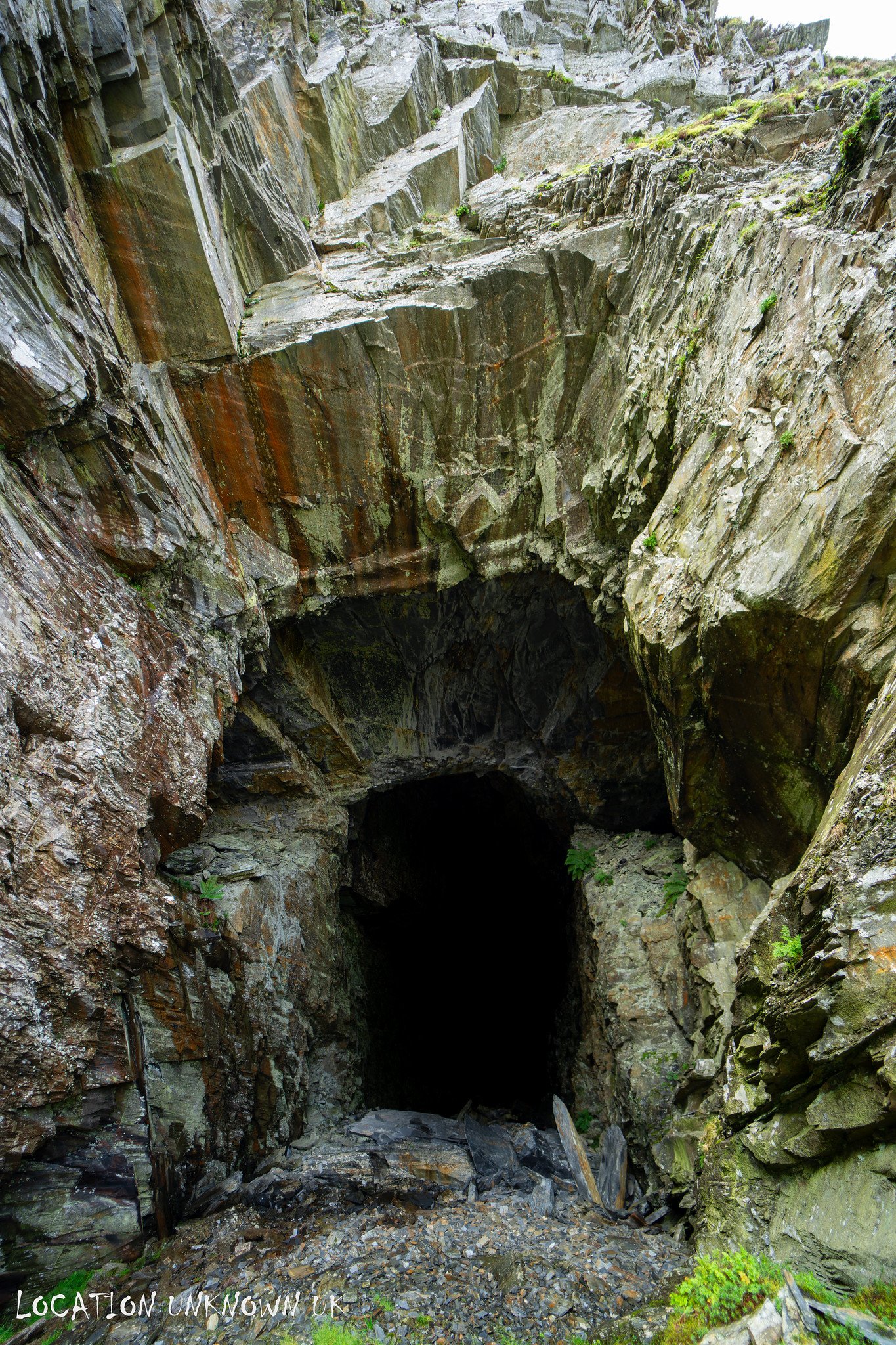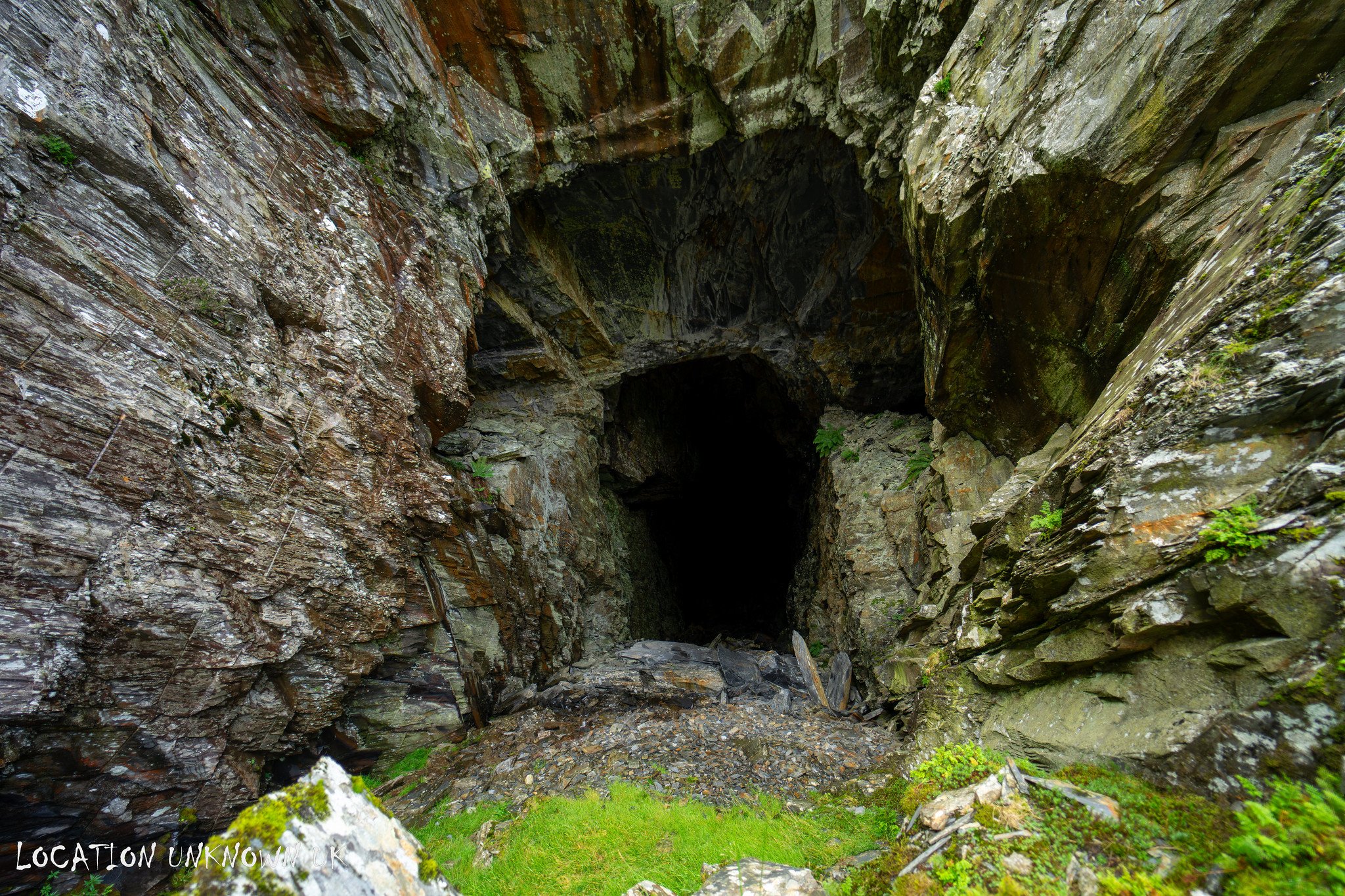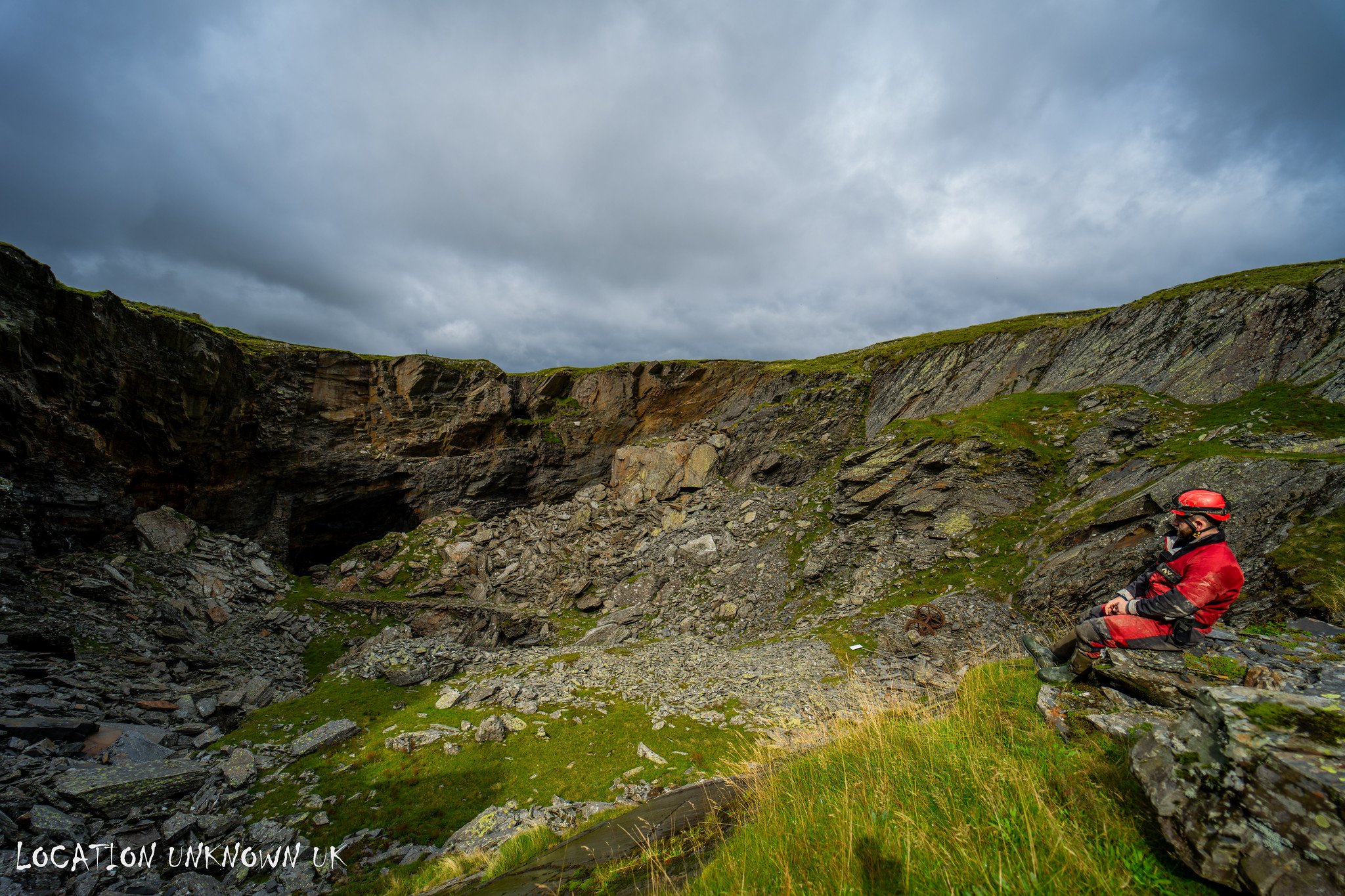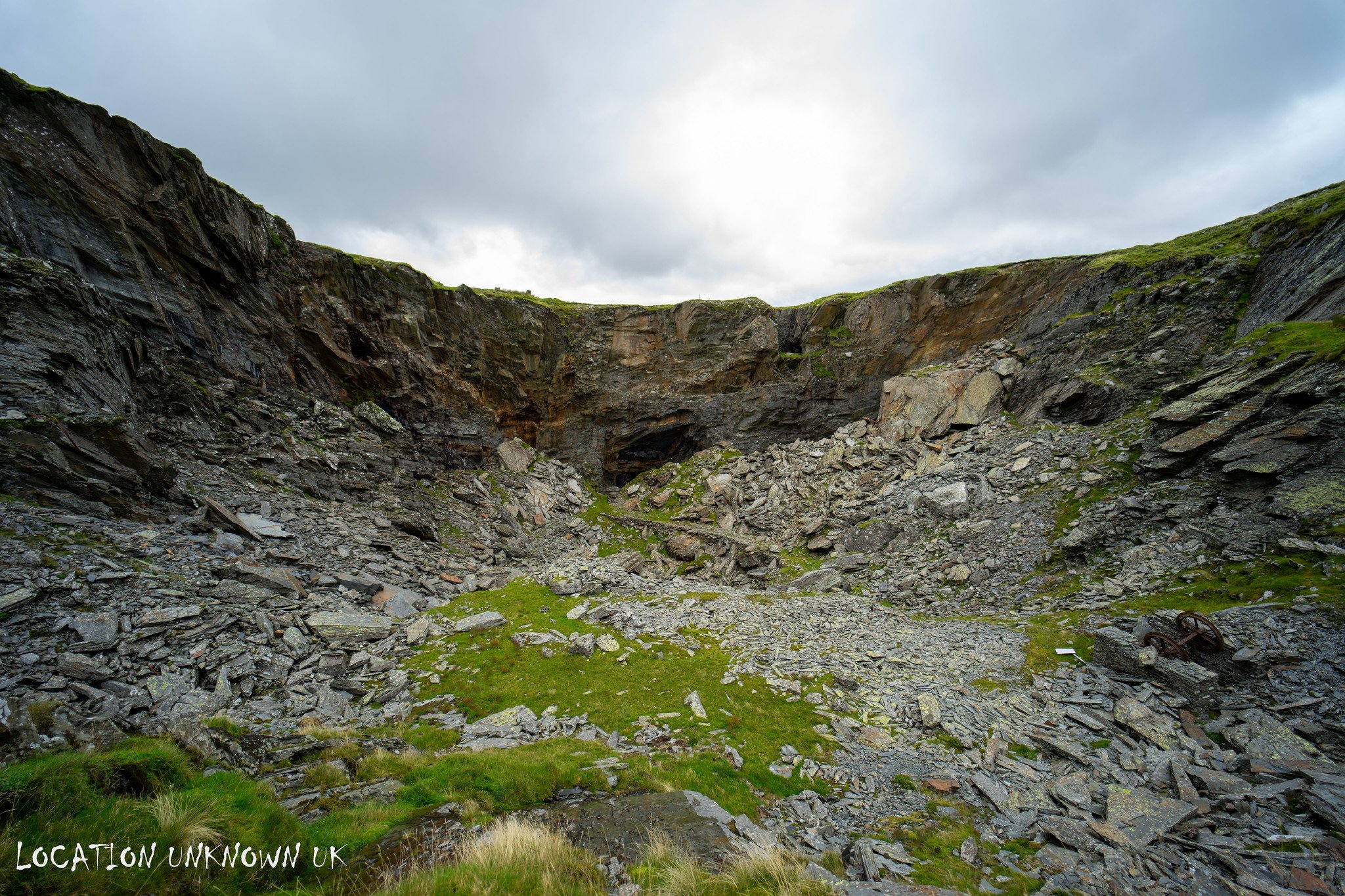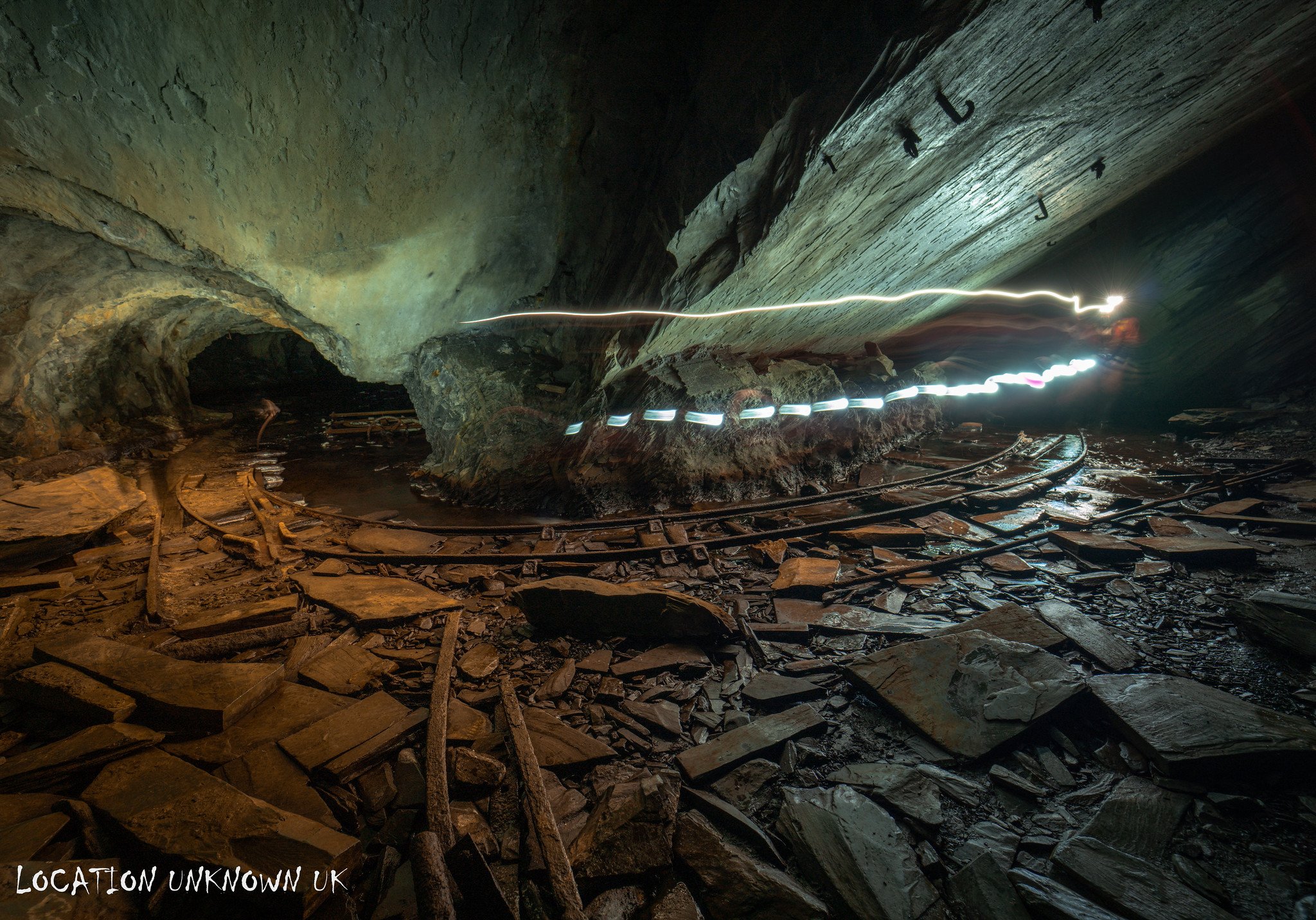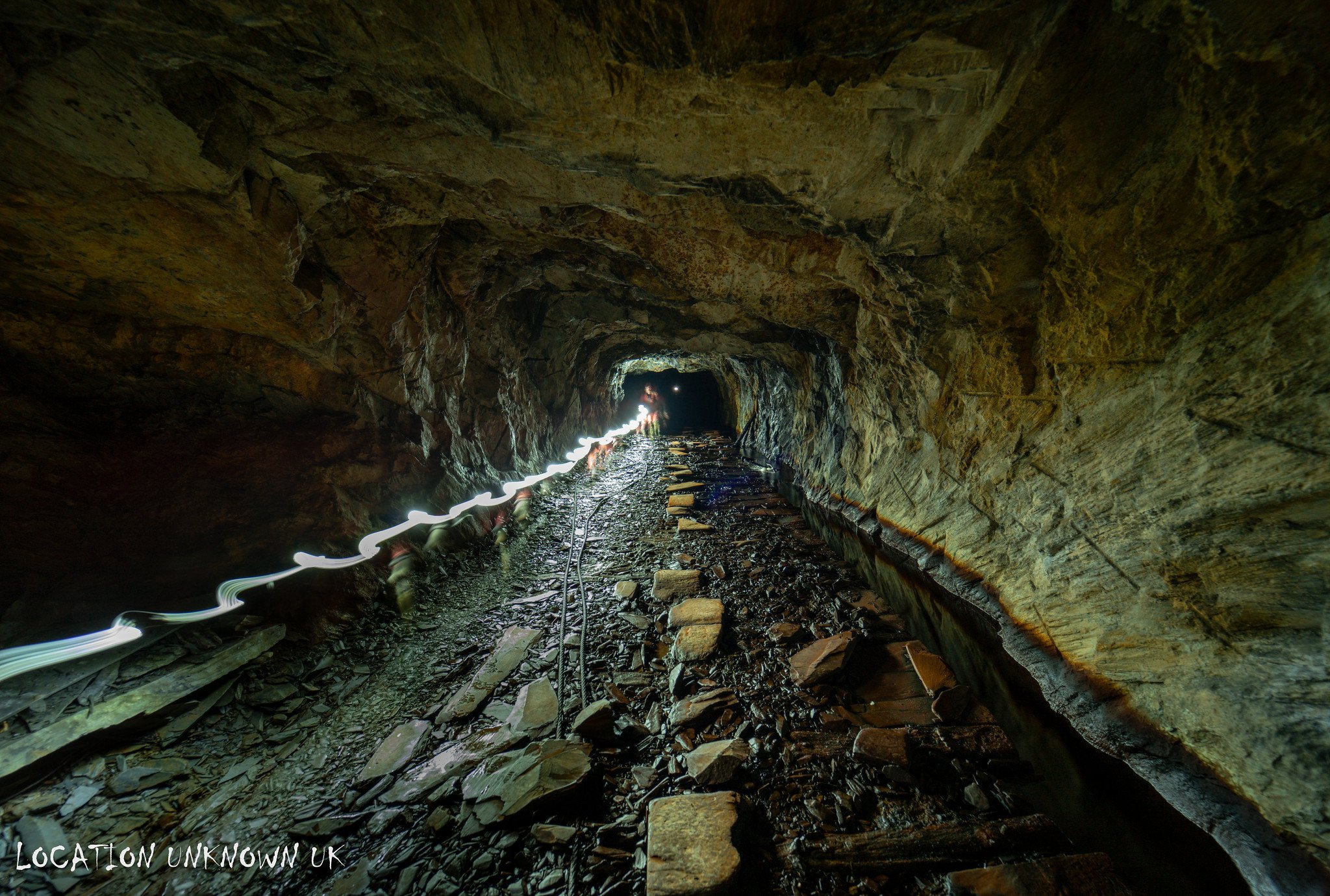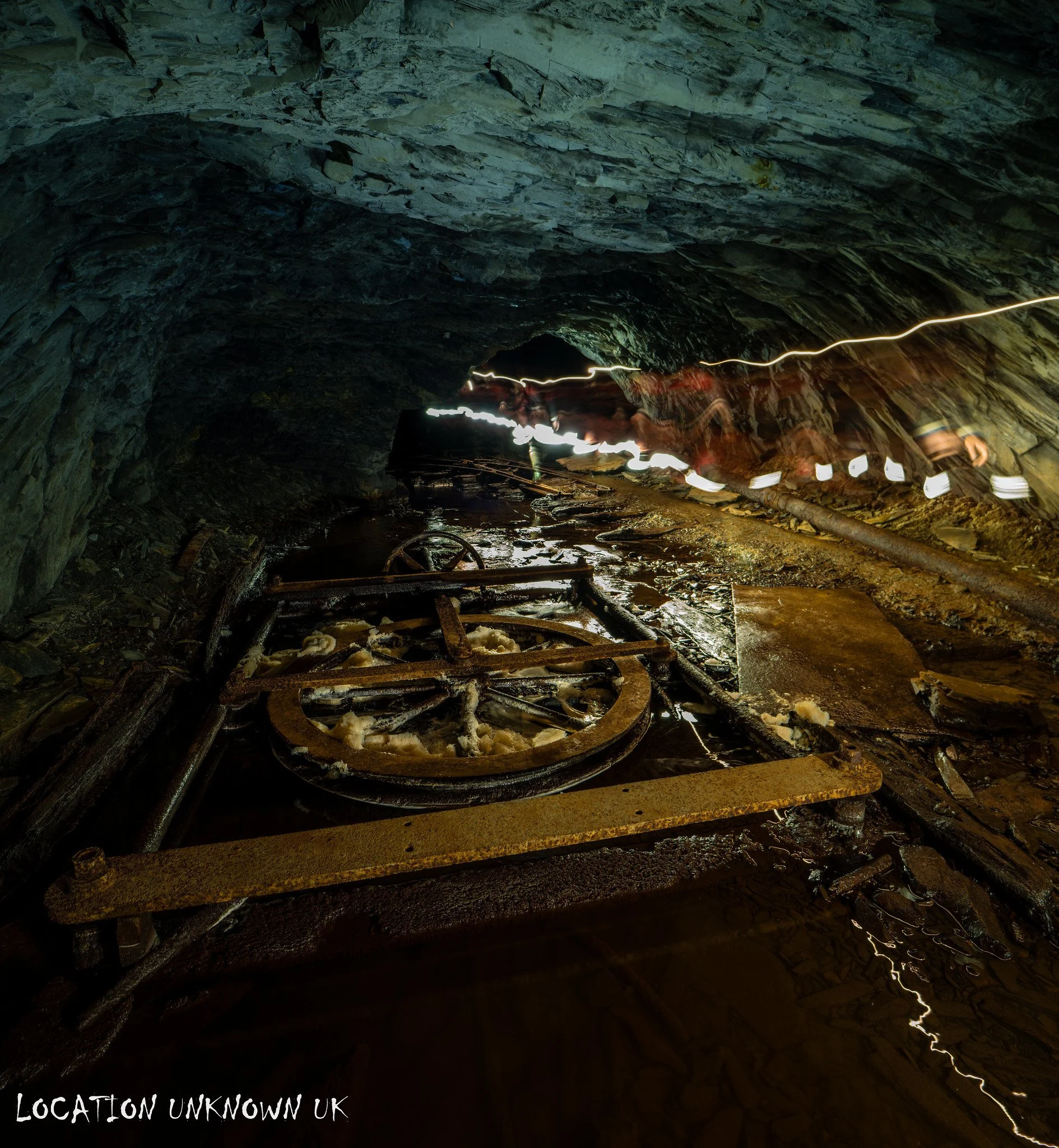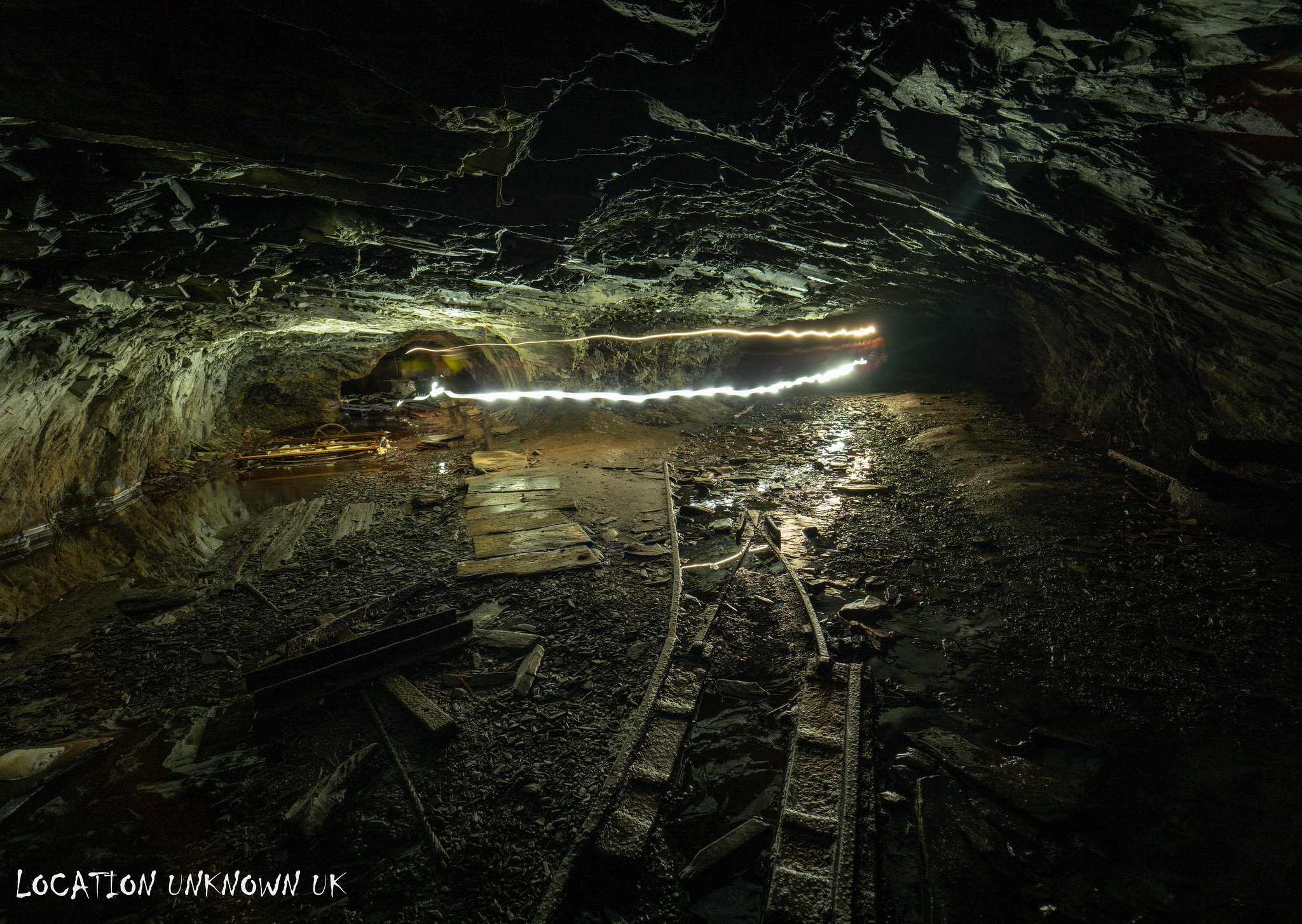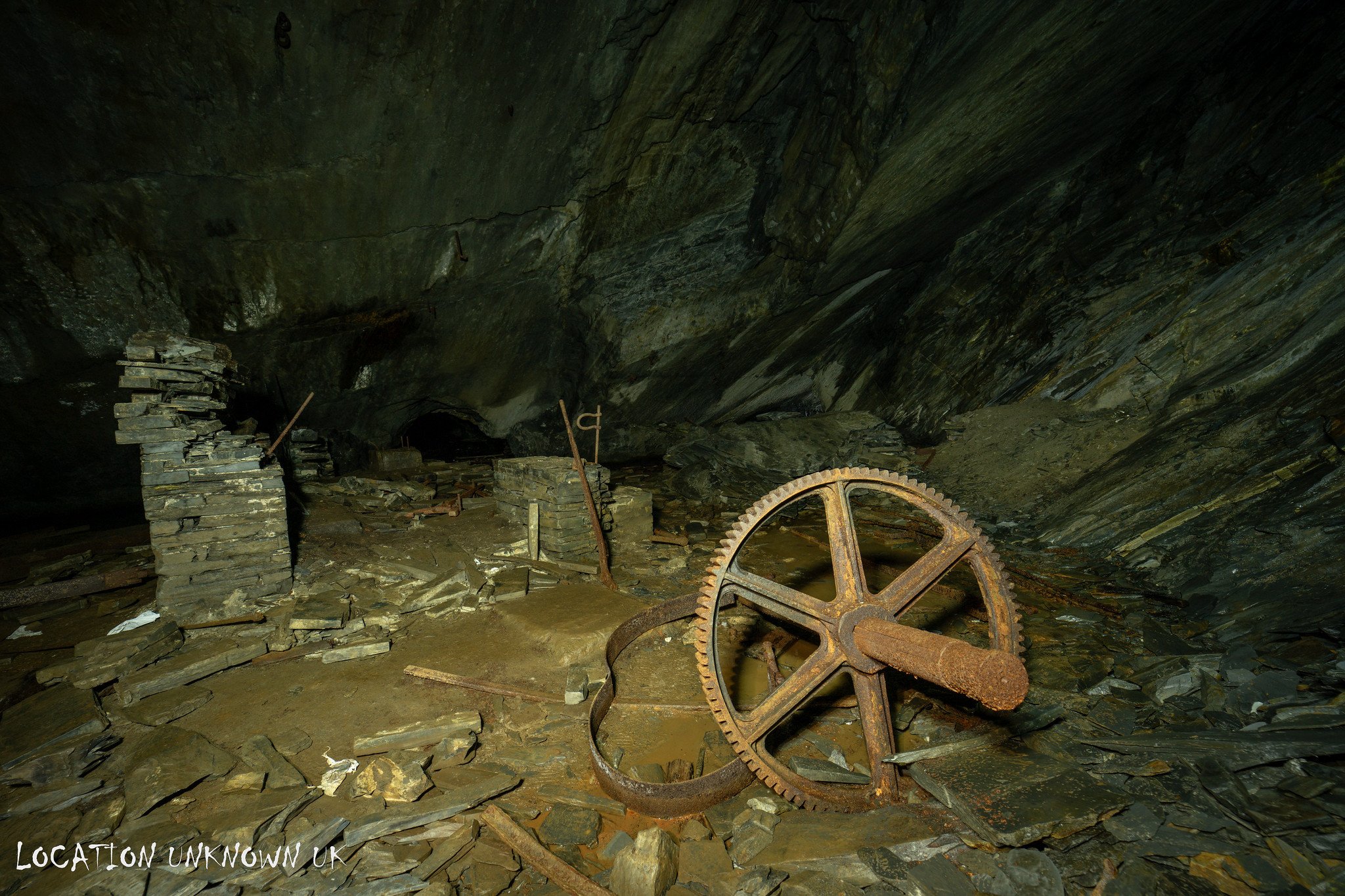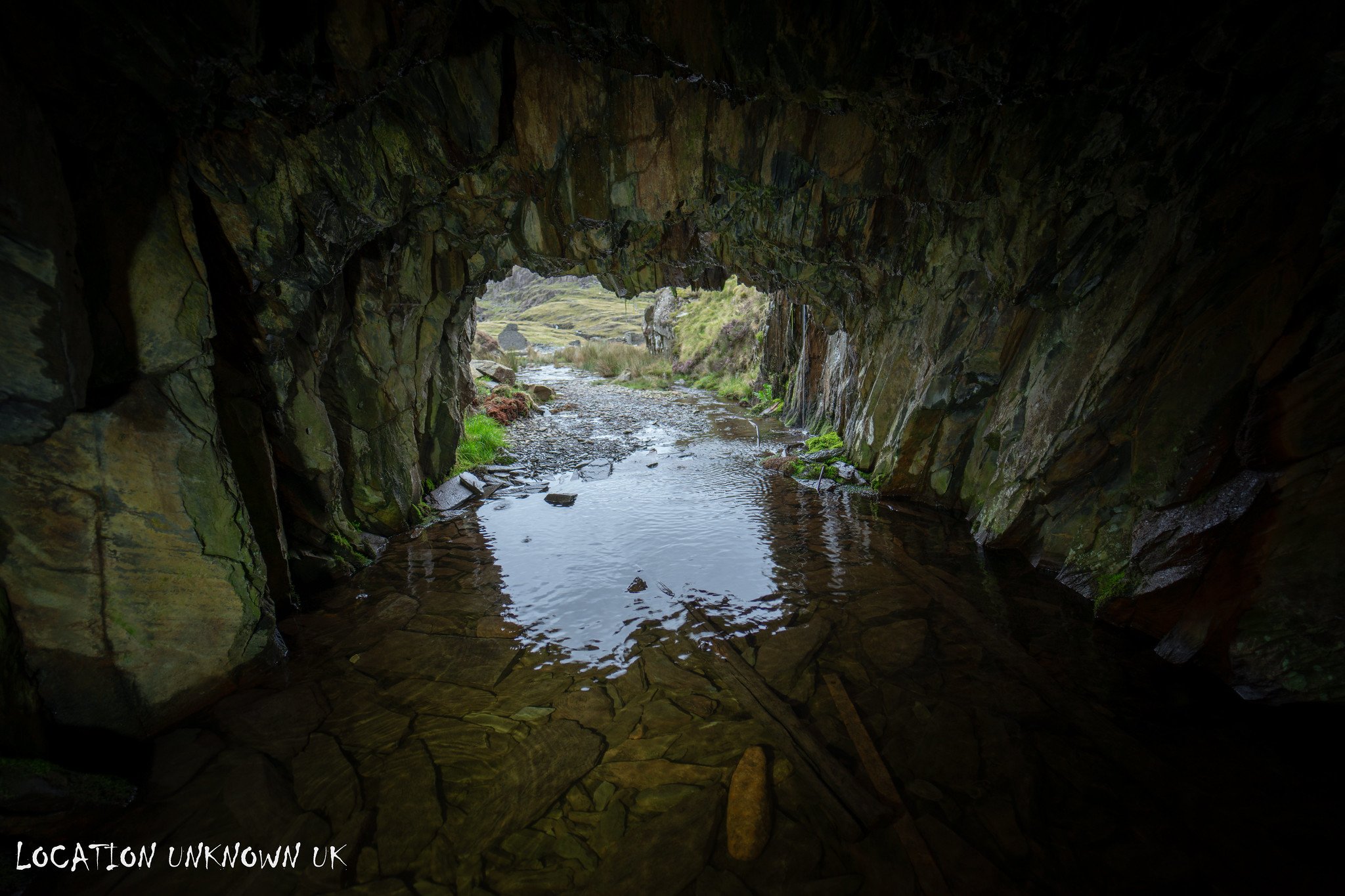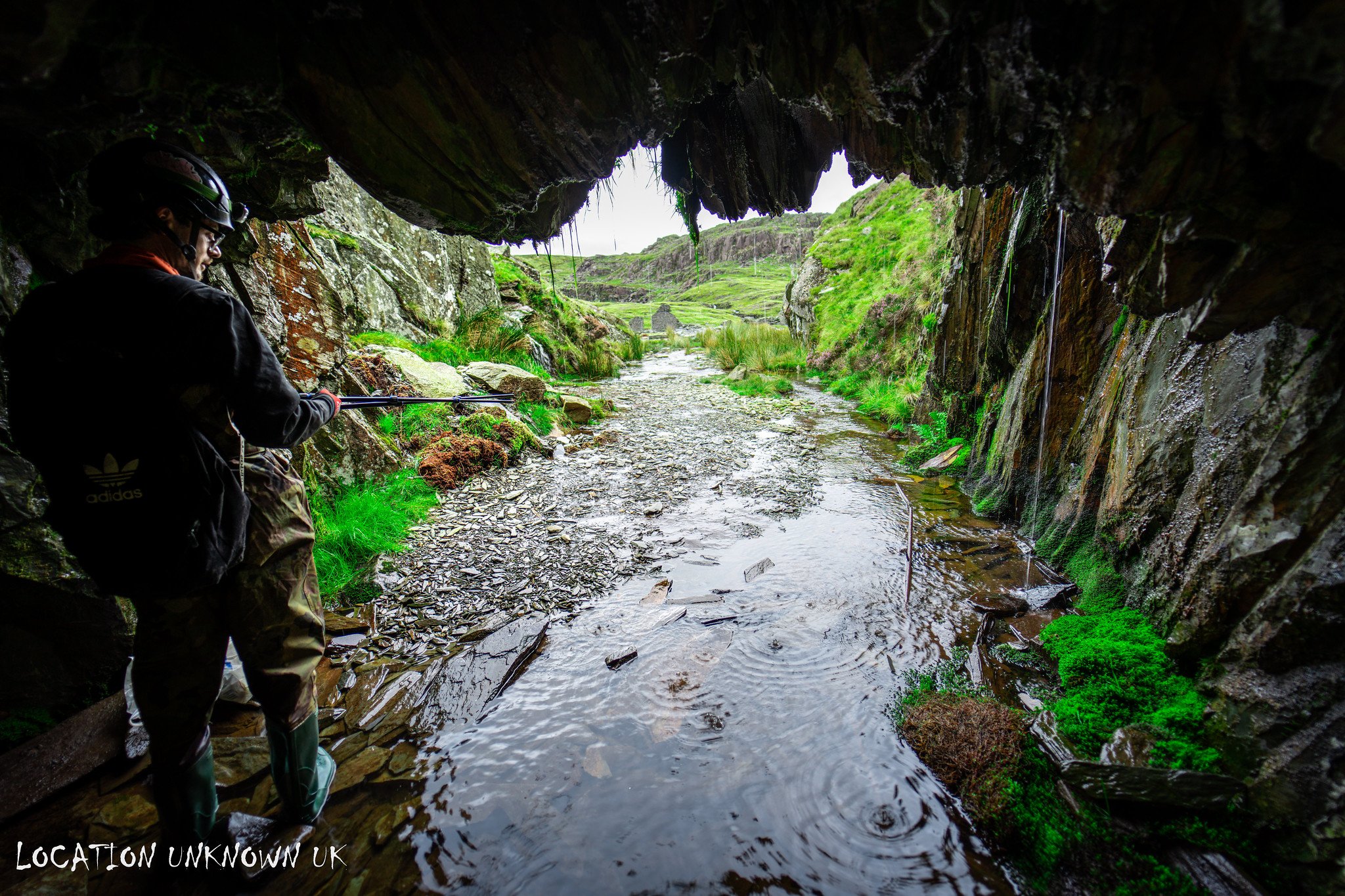Rhosydd Slate Quarry - Blaenau Ffestiniog
The walk up to Rhosydd is one of the best walks I’ve done to a mine—apart from the ridiculous incline from the car park (if you’re lucky enough to get a space that is). Along the way, you pass a former mine manager’s building, numerous picturesque waterfalls, a large lake, and the popular Cwmorthin slate mine. I’ve previously visited this place just for a walk with the dog, as Wales boasts some of the most dramatic scenery in my opinion.
After another steep but shorter incline, you come across a cluster of quarrymen’s houses, mostly collapsed, leading to the Rhosydd Level 9 adit. This was the longest adit built at Rhosydd, measuring an impressive 2,221 feet from its entrance to the haulage system at its inner end. With a gradient of 1 in 86 to aid drainage, it took eight years to complete, finishing in around 1871. The entrance to the adit is perpetually wet, with water always creeping over wellie depth.
Once through the adit, there’s plenty to explore on this level alone, but our main focus was climbing upwards to visit the awe-inspiring daylight caverns. These vast chambers, blasted from the quarry workings above, are some of the largest I’ve ever seen. The natural light flooding in gives the space a stunning, ambient feel, eliminating the need for a head torch in most of this area.
We planned to visit up to the Croesor connection—a boundary wall separating the two mines that was demolished when the mines joined forces. From here, you can look down to the underground lake below where a canoe and pulley system resides. The pulley system is often snagged, and the canoe has been taking on water during my past visits, making for an entertaining (if somewhat nerve-wracking) crossing. The Croesor to Rhosydd through-trip is popular among cavers, and it’s easy to see why. It involves abseils, ziplines, ladders, and a crossing over the lake where you abseil into the partially submerged canoe. It’s essentially an underground adventure playground for adults.
However, today’s trip was far more relaxed, as we focused on exploring the Rhosydd workings themselves, which are impressive in their own right. On previous trips, I’ve usually been passing through here from the Croesor side without much time to appreciate or photograph these workings. This visit gave me the perfect opportunity to do so.
We spent several hours methodically moving forward, taking care underfoot as the slate was particularly slippery due to recent bad weather. The surface workings at the top of the large chambers give the illusion of being back above ground, but this is far from the case. From there, you’re essentially in a large “frying pan” with edges too high to climb out of. In an emergency, escape would be possible, but it would involve a rather precarious ascent—not something you’d want to attempt in the dark.
After thoroughly exploring all we could without our SRT gear, we exited via the adit and checked out some smaller nearby workings before wrapping up the day.
History
“Slate was first discovered here by two men in 1830 and after a court battle to properly determine boundary lines work began to create the first working adit in 1840. By 1852 the operation would go commercial with a five way partnership being established. The mine by now was 4 levels deep with multiple adits on different levels and horses were being used to transport the mined slate to the nearby railway. A few years later the transportation of slate would improve with the opening of a tramway and the steepest single pitch incline in Wales descending more than 750 ft. The peak year for the quarry was in 1885, when 6,484 tons of finished slates were produced by the 207 men. However, profitability declined and then in 1900, a large section of the underground workings collapsed in what was known as the "Great Fall". The quarry would later shut down in 1914 as it was deemed a 'non essential industry' and re-opened after the great war. After more years of struggle the pumps were finally turned off in 1948 and the equipment removed for scrap. The quarry was purchased by McAlpine in the 1990s, but quarrying was not resumed. Since then it has remained an impressive reminder of this once great industry that dominated North Wales”.
